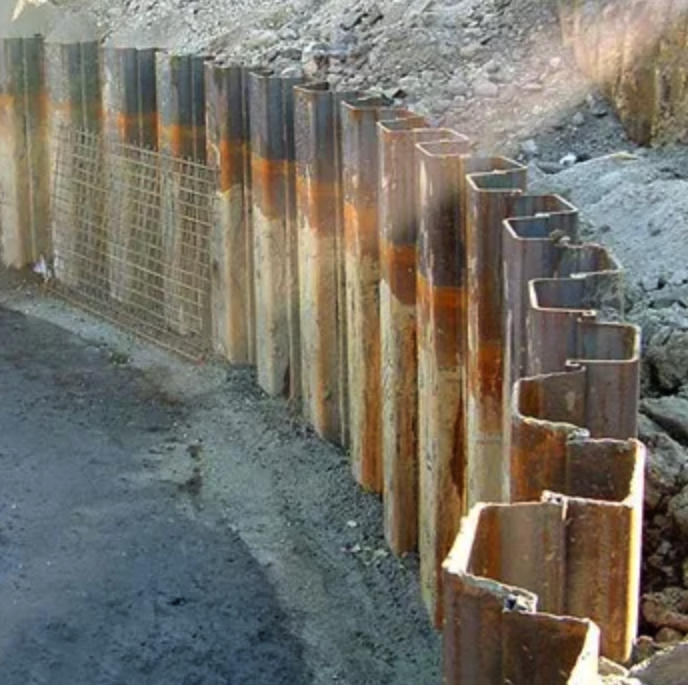A Deep Dive into Sheet Pile Retaining Walls
RH Business Marketing Solutions
Sheet pile retaining walls are a workhorse of a solution for projects involving water or unstable soil. These walls consist of interlocked steel panels driven into the ground, creating a strong and watertight barrier. Their versatility makes them ideal for various applications, including waterfront projects, deep excavations, and areas with weak or unstable soil conditions.
This article delves into the world of sheet pile retaining walls, providing a comprehensive guide for those considering this method:
· We'll explore the unique benefits that sheet pile walls offer for retaining walls.
· Different sheet pile materials that are available, and we'll break down the options.
· Key factors influencing the design of sheet pile retaining walls.
· The typical sheet pile wall Installation process:
· We’ll highlight the role of experienced sheet piling contractors, to ensure a successful sheet pile wall project.
Advantages of Sheet Pile Walls:
Steel sheet piles can withstand high soil and water pressure, making them durable and stable in the long run. Sheet piles can be driven to different depths, accommodating both shallow and deep excavations. Interlocking steel panels form a near-impervious barrier, preventing water infiltration in waterfront projects or areas with high groundwater levels.
Prefabricated sheet piles can be driven into the ground rapidly, saving time compared to traditional concrete walls. Sheet piles are also suitable for soft or loose soils where other retaining wall options may struggle to perform well.
Types of Sheet Pile Walls:
Sheet pile walls are categorised based on the profile of the interlocking steel members and the material used. Here's an overview of common types:
Z-Shaped Sheet Piles: These are widely used, offering good lateral strength and efficient interlocking.
U-Shaped Sheet Piles: These provide high bending resistance and are often utilised for deep excavations.
Hoesch Sheet Piles: These feature a wavy profile offering excellent watertightness and are suitable for waterfront projects.
Vinyl Sheet Piles: While less common, vinyl sheet piles offer a lightweight and corrosion-resistant option for certain applications.
The optimal sheet pile type for a project will depend on factors like wall height, soil conditions, and required watertightness. Consulting with geotechnical engineers and piling contractors is crucial for making the right selection.
Design Considerations for Sheet Pile Walls:
The design of a sheet pile retaining wall involves meticulous planning and calculations to ensure its stability and functionality.
A thorough geotechnical investigation determines soil properties like strength, bearing capacity, and water table level. This information is vital for designing the wall to withstand the anticipated loads.
Structural engineers calculate the forces acting on the wall due to retained soil, water pressure, and any potential surcharges (additional loads). This determines the required wall thickness, penetration depth, and any necessary reinforcements.
For taller walls or those subject to high loads, tie rods or anchors might be needed to provide additional stability. These are typically installed behind the sheet piles and connected to deadman anchors (large concrete blocks) buried in the ground.
Depending on the project location and environmental conditions, sheet piles might require a protective coating or sacrificial anodes to prevent corrosion.
Sheet Pile Wall Installation Process:
Building a sheet pile retaining wall involves several steps:
1. Site Preparation: The area is cleared and levelled, and any utilities that may be in the way are relocated. If needed, a temporary guide wall made of wood or metal is built to help guide the sheet piles.
2. Pile Driving: Special hammers are used to drive the sheet piles into the ground to a set depth, making sure they overlap and align correctly.
3.Excavation: Once the sheet piles are in place, they act as a temporary retaining wall, so the area behind them can be excavated to create the desired space.
4. Temporary Support: If the excavation is deep or the soil is unstable, temporary supports or braces may be needed to keep the trench from collapsing.
Summary
To summarise, sheet pile retaining walls are often used for projects near water, excavations that are deep, and in areas with weak soil. Consisting of interlocking steel panels (sheet piles) that are inserted into the ground. are strong and can hold back large amounts of soil.
They can be installed quickly and easily in many soil conditions. They are relatively inexpensive to construct. To achieve a successful retaining wall solution, it is important to understand the advantages and complexities of sheet pile walls and to work with qualifiedsheet piling contractors.
